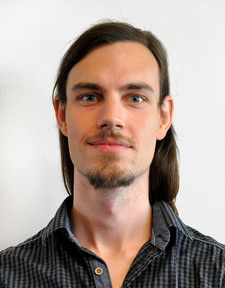Platone Educational Video Series
Open-Source PLATforms for Operation of distribution NEtworks (Platone)
Educational video series about the Platone framework. The video series cover three main aspects: Introduction about the digitalization of the energy sector and the proposed open source solution of Platone; tutorials about the open-source DSO Technical Platform of Platone, i.e., Service-based Open-source Grid automation platform for Network Operation of the future (SOGNO), and finally; the DSO demonstration testimonials about the application of the framework proposed by Platone.
Access
Platone website:
platone-h2020.eu/Resources/Educational_Videos
Contact
RWTH Achen University - Institute for Automation of Complex Power Systems
Contact Antonello Monti
Engineering Ingegneria Informatica S.p.A. (ENG)
Contact Ferdinando Bosco
Avacon Netz GmbH
Benjamin-Georg Petters
Further information
SOGNO website:
sogno.energy
Platone at GitLab:
Open-Source PLATforms for Operation of distribution NEtworks (Platone)

Interview with:
Florian Oppermann
Math.-techn. SW-Devoloper at the Institute for Automation of Complex Power Systems
RWTH Aachen University
Interviewer: Florian Oppermann, Platone consortium partner RWTH Aachen University coordinated the Platone Educational Video Series. Let´s assume I am a member of the IT
department at a DSO in Germany. I mostly spend my days deploying
software solutions for the electrical grid for which our DSO is
responsible for. Recently, I got to know about the open-source
philosophy of Platone via a workshop. I am specifically interested in
the DSOTP component of the framework. I am looking for some video
tutorials about how deployment is done for this open source platform.
And lucky I am I have found the Platone Educational Video Series. Tell
us more on this tutorial!
Florian Oppermann: We recently recorded the video series that provides you with an overview of the Platone open source approach for the digitalization of the energy sector. More importantly, there are also extensive tutorials that should provide you with everything you need to know to run an instance of the open source DSOTP, i.e., SOGNO Platform. It will both give you an overview of the platform and the technologies used to run it. Finally, the series is accompanied by testimonials from the demonstrators about the application of the open source platforms for the respective field trials.
Interviewer: This means that the tutorial videos can help the staff of a DSO IT department understand the concept. I have some other questions though: Do the tutorials include some examples of the already existing services within the platform?
Florian Oppermann: Yes, the tutorials start with a fresh Ubuntu machine and walk through all the steps necessary to run and an example setup with one Sogno service. The steps for the other services are very similar. The tutorials also provide enough background information to get a basic understanding of how the deployment works, but will not go into detail about everything that there is to know about kuberntes etc.
Interviewer: What are the requirements to follow the tutorials related to the DSOTP?
Florian Oppermann: The example setup in the tutorial is done using a virtual machine with 4 VCPU’s and 8GB of RAM and the tutorial explains how to setup a cluster for demo purposes on an Ubuntu machine. Furthermore, you need admin/sudo rights.
Interviewer: The setup is only possible via k3s and docker?
Florian Oppermann: We do not provide files for running the services in docker, a direct installation can only be done on kubernetes (either k8s/k3s). The images are however openly available, so it is possible to write your own docker.compose file. Also the packages are all available as source code if you want to run them independently. However, the installation and usage is less uniform this way.
Interviewer: Can the legacy system of the mentioned DSO be interfaced to DSOTP?
Florian Oppermann: All our service follow the same approach of providing a REST-API, any software that can format data and send http requests can interact with it.
Interviewer: If the DSO also has some algorithm developers in the department that would like to develop open source solutions, do the videos help them or is the target audience specifically the ones implementing and deploying SW solutions?
Florian Oppermann: The tutorials are cut into multiple steps. Developers that are already experienced with micro-services and kubernetes can at least use some of them to see if our ideas and goals match up fully. For developers that had no contact with these topics yet, the tutorial series will give a great overview of the ideas and technologies used and are thus a good jumping-off point. Due to the sheer scope of the topics however, the videos cannot explain how everything is developed from scratch. For this, you need to use the documentation and tutorials already available on those specific topics.
Interviewer: What about support? Are you or somebody at your organization available to grant help if needed? How can an interested party get in touch with you?
Florian Oppermann: As always you can contact me via mail (florian.oppermann@eonerc.rwth-aachen.de) or in the LFEnergy Sogno slack channel if you have problems. I highly recommend checking out the very dedicated kuberntetes tutorials for broader questions though.
Interviewer: The services within DSOTP are the stable ones? Are the repositories maintained?
Florian Oppermann: Yes, the existing services that you find on the Sogno portal are the stable ones. The services are also monitored and maintained by the developers and the Sogno life including maintenance will continue within LFE. Furthermore, by contacting the service and project owners, external contributions are more than welcome.
Interviewer: Thanks a lot for the interview, Florian Oppermann!